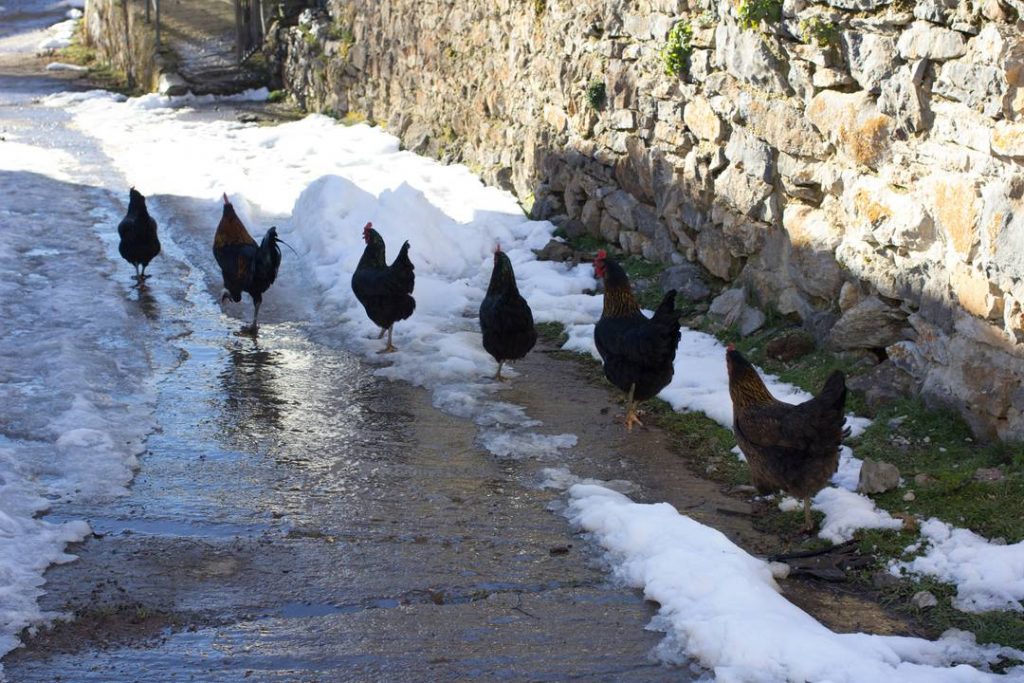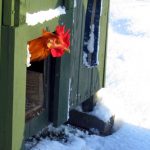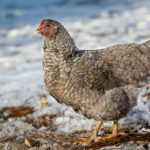 If you want to increase your autumn and winter egg production by increasing the day length with artificial lighting you can build your own system or buy a commercial system.
If you want to increase your autumn and winter egg production by increasing the day length with artificial lighting you can build your own system or buy a commercial system.
Exactly how you build your artificial lighting system to increase winter egg production will depend on whether you can get mains power to the coop or need to feed power from a battery.
Day Length Required
You should aim to increase the day length to between 14 and 16 hours to maximise production. Where we are in the UK this means providing extra light from September until the middle of April when natural daylight is below 14 hours.
You can calculate how long days are at your location from the sunrise and sunset times which are easily available on the net. The BBC weather site shows the sunrise and sunset times.
You can extend the day into the evening, you can start the day earlier or you can do a combination of both. If you extend the day into the evening, do keep in mind that the hens will be taken by surprise by suddenly being thrown into total darkness.
One way round this is to provide a small, low-power night light that is on a separate circuit set to switch off 15 to 20 minutes after the main lights. For this reason I would suggest the simplest method is to add the extra hours on in the morning.
Do ensure the birds have access to food and water when they wake up early. Consider neighbours if your hens are giving triumphant egg laid cackles in the early hours of the morning!
How Much Light To Provide
You need to provide enough light so the hens think it’s day. They need to see their feed and get around easily. One way to judge it is to take a newspaper with you. If you can read it, it’s bright enough.
Safety
If you don’t know what you’re doing with electrics, get someone who does to help. Don’t forget – water and electrics do not mix!
Remember lights, even LED lights, and transformers etc. can get hot. Make sure nothing is in contact with straw or other flammable materials in the coop. Keep things out of pecking distance as well.
Build Your Own Artificial Lighting System Using Mains Power
The easy way is to fix a lamp batten or battens to the roof of the coop or a strip light so the light is evenly spread. If you want to illuminate the run as well you’ll need an outside light bulkhead fitting or floodlight.
Connect these up to the mains via a timer. I prefer the mechanical ones as I find them easier to adjust as the season changes as well as a little cheaper. You can pick these up from Screwfix or Ebay for £5.00 or so.
All you then need to do is adjust the timer each week as the daylength changes.
Build Your Own Artificial Lighting System Using Battery Power
The basic design is the same as for mains power except you will need a timer designed to work at 12 volts rather than the 240 volts of the mains system. And a battery of course.
Old car batteries are not really suitable as they are designed to provide a high level of power for a short period when starting the engine. Caravan or ‘deep cycle’ batteries are better.
How Long Will the Battery Last Between Charges
Batteries are rated in Amp Hours (Ah) which is a measure of how much power they can store. It is easy to calculate how much capacity you require with a little maths. Amps are the result of dividing the wattage by the voltage.
Lets say you have two 5 watt lamps running at 12 volts. That means the current is 2×5 watts = 10 watts divided by 12 volts = 0.84 amps.
If the lights are to be on for 8 hours a day in the depths of winter, to run then for a week you will need 0.84 amps times 8 hours a day which gives us 6.72 amp hours per day. Multiply this by 7 days and we get 47.04 amp hours a week.
It’s always wise to allow spare capacity so a 60 Ah battery or larger caravan or deep cycle battery is required. An 85 Ah battery on Ebay will set you back just over £50.00.
Don’t forget you will need a suitable battery charger and have to take the battery inside once a week to charge it!
Solar Powered Chicken Coop Lighting System
It’s possible to add a solar panel and charger to the system. It should be kept in mind that the panel will need to produce enough power to keep the battery topped up at the time of year when demand is highest and available day light lowest.
Also solar panels do not operate at 100% of their rated efficiency so you will need to take that into account. A 25 watt kit complete with charger should set you back between £40 and £60 on ebay.
Do check with the suppliers that the battery and charger etc. are compatible.
LED Lights Note
LED lights are the most efficient and should have a very long life (up to 50,000 hours use in theory). Whilst you can buy them very cheaply from Ebay etc. there is a problem with many of the cheapest bulbs. The electronics that power the LED chips are often poorly designed and built so the bulbs die quite quickly.
It is worth paying extra to buy LED lights from a shop and keeping the receipt so if they do die before their time you can get a refund or replacement.
Conclusion
Artificial lighting in the chicken coop will increase winter egg production. It can be installed quite cheaply if mains power is easily available, probably for less than £20.
A battery powered system will add to the cost, probably taking it up to £70 and solar power will give a total system cost of around £130.
A more sophisticated control system that fully automates the 12 volt system and can switch lighting on both in the morning and evening can be purchased from Rooster Booster whose web site offers more information.
See also these pages for other ways to increase egg production in autumn and winter:



